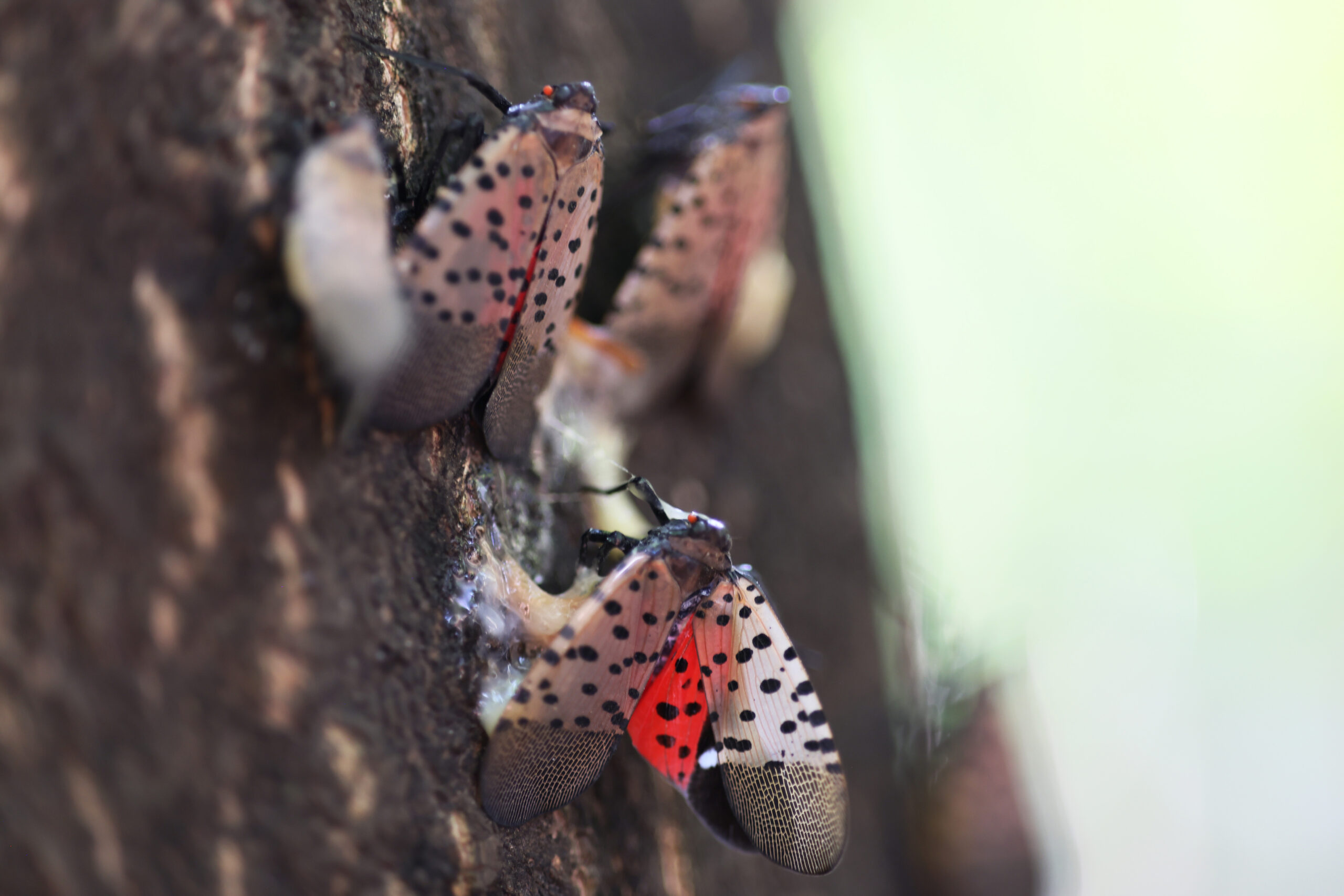Seeing spotted lanternfly eggs? Scrape, smash, report them

By Cecelia Shilling
The spotted lanternfly, an invasive, crop-damaging insect, has finished mating season and is preparing to lay egg masses around Maryland, threatening farms and local plants, particularly on the Eastern Shore and in northern Maryland.
If you see these egg masses or the bugs, officials say to scrape, smash and report eggs to the Maryland Department of Agriculture.
Spotted lanternflies have spread quickly across 14 states, including Delaware, Virginia and Maryland since their arrival in the country from China in 2014, according to the Animal and Plant Health Inspection Service. Though the flies don’t sting or bite, they have threatened plants in Maryland since their discovery in 2018 in Cecil County.
The bugs’ preferred foods are fruit, like grapes, and trees, including maples, and especially the common, invasive, weedy tree of heaven.
“The spotted lanternfly causes serious damage, including oozing sap, wilting, leaf curling and dieback in trees, vines, crops and many other types of plants,” said the Pennsylvania Department of Agriculture’s website. “In addition to plant damage, when spotted lanternflies feed, they excrete a sugary substance, called honeydew, that encourages the growth of black, sooty mold.”
The pests can be identified by their distinctive gray, black and red wings with black spots, while the younger bugs in their “nymph phase” are black or red with white spots. These bugs can be found across the state, but infestations are worst in northern Maryland and along the Eastern Shore, according to the University of Maryland Extension.
Though Sudlersville produce grower Jennie Schmidt finds the flies in her vineyard, she’s found hundreds in her buffer area between farm acres, she said.
“When we were mowing one of our buffers a couple of weeks ago, my husband must have hit one of the Tree of Heaven and all these lanternflies came flying out. So we started looking more closely and in those groves of the tree of heaven, there are hundreds, if not thousands, of them,” Schmidt said.
Her main concern is transporting the lanternflies from her farm to other vineyards, she said.
“I don’t want to travel with my grapes and my spotted lanternflies to places that don’t already have them because I don’t know how they got here, like, in the middle of nowhere,” Schmidt continued.
Owen Bailey, director of land use and policy for the Eastern Shore Land Conservancy, remembers seeing juvenile lanternflies in his Chestertown yard this spring.
“They were in my backyard along my fence line where I have a lot of wild grape vines growing, and I noticed dozens and dozens of them along that vine. I tried to squish them or kill them with my hands but they actually proved pretty fast and elusive,” he said.
The insects are most active during summer, but begin laying egg masses along any hard surfaces in September and ending in about November or until the first freeze, according to the Cornell College of Agriculture and Life Sciences.
“[The egg masses] are about one inch long, and they have a gray mud-like covering. That covering will crack and dry over time,” said Rachel Rhodes, University of Maryland Extension master gardener. “So it kind of looks like a raised piece of putty. The covering will eventually flake off and it will reveal 30 to about 50 brown eggs.”
Lanternflies thrive here because they aren’t preyed upon by the state’s insects or animals, she continued.
“We do have praying mantis, and assassin bugs, and predatory stink bugs and birds. But because they are an invasive insect, we don’t necessarily have natural predators in our areas that will go after them as a snack,” Rhodes continued.
Anyone can help curb the pest population: Officials recommend using a plastic card or putty knife to scrape then crush any lanternfly egg masses, as well as eliminating any trees of heaven to avoid attracting the insect.



